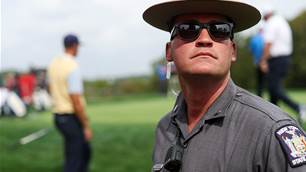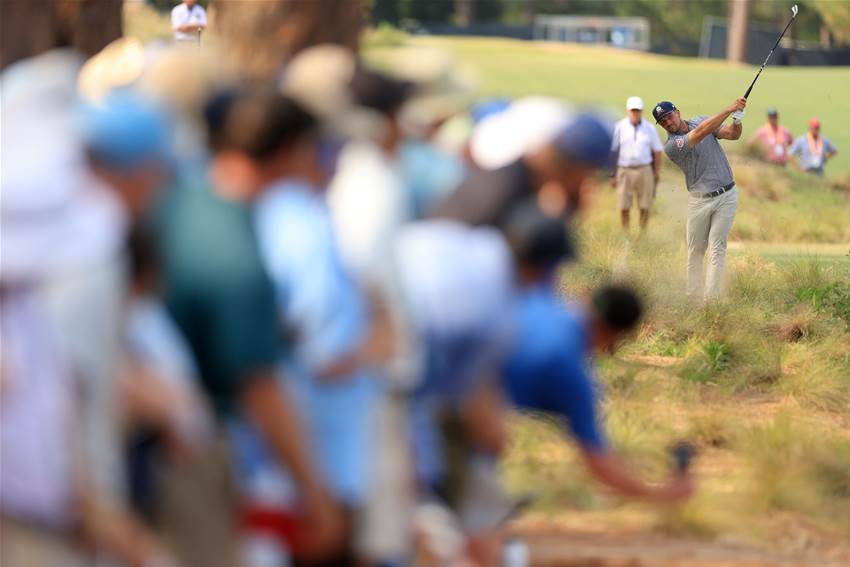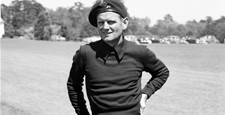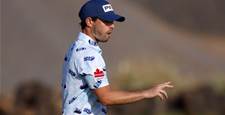The U.S Open had a brilliant and compelling finish as the game's superstars rose and fell until there could be only one. And it was Pinehurst No.2 that made it happen.
In the olden days – think back to as long ago as 2023 - the good burghers of the United States Golf Association (USGA) would set up a U.S Open venue from a simple, brutal template: super-thin fairways, super-thick rough, tight pins, repeat.
The U.S Open has largely been, as Brandel Chamblee said on the telecast, about "crime and punishment". Do the crime (of missing a fairway), cop the punishment.
And thus U.S Opens have been – and it appears from the future venues list will be - a test largely of long driving accuracy.
Hale Irwin won three majors, all U.S Opens, because straight-hitting was his thing. Plonk, plonk, putt, putt. Repeat.
The great Seve Ballesteros won five majors – three Open Championships, two Masters.
After being DQ’d for missing a Friday tee-time at the 1980 U.S Open at Baltusrol, Ballesteros said: “It doesn’t matter. I couldn’t win anyway, the rough is too severe.”

Ballesteros had won the Open Championship a year before, and that year’s Masters. Yet the setup at Baltusrol had ruled out the greatest buccaneer the game of golf has known.
Bryson DeChambeau has a bit of Seve's adventure about him. And on Sunday at Pinehurst, he ventured into the rough several times, only to be surrounded by four-leaf clovers. He could've been dead five, eight times. He was not, and he rode his luck into legend.
Pinehurst No.2 was not a ‘normal’ or ‘traditional’ U.S Open venue. Yet it delivered a brilliant and compelling U.S Open that was also a stern test of a top golfer’s mettle.
The rough produced random results. Sandy waste dotted with tussocks of wiregrass meant luck’s a fortune. There was "punishment" for "crimes" - it was harder, sometimes impossible, to hit the green.
But sometimes it was not. Sometimes the golf gods shelved judgement. Sometimes they thought of Payne Stewart.
If DeChambeau had missed as many fairways at Oakmont or Winged Foot or bitchin’ old Bethpage, he might have shot 82.
Golfers still had to think about it. There was more than one option. It wasn’t just chop it sideways, cop it sweet. There was hitting and hoping. There were unplayable lies taken.
It was highly entertaining.

No.2 produced a finish with world class players doing their very best down the stretch. They rose, they fell, they fell again. It was tough – but there was more than one way to score or stuff it up.
And how they reacted to bad luck was as important as their reaction to good.
The game’s great architects – and you can go back to legitimately olden days in 1822 – wanted golf to be a test of a man’s mettle as much as their skill. How one reacted to bad breaks spoke to character.
Dr Alister MacKenzie, whose work on Augusta National, Royal Melbourne and New South Wales, among a few others, still holds up okay today, had several philosophies around course setup that the USGA could think about for future U.S Open venues.
In MacKenzie's seminal work, Golf Architecture (1920), there were “13 Principles of Golf Course Design”. Most of them parse with Pinehurst.
Consider Rule 9: “There should be an infinite variety in the strokes required to play the various holes, i.e., interesting brassie shots, iron shots, pitch and run-up shots.”
No.2 had tests off the tee, in the approaches, in the up-and-downs. Those turtle-back greens, well, you needed hands like Chopin. You could chip-and-stick or chip-and-run or Texas wedge from downtown.

Players had to think about where to hit the greens. It wasn’t just flag-hunting darts. It was closer in feel to Royal Melbourne – hit the middle of those babies, you bound over the back.
Look at 15, a 180-metre par-3. Barely anyone hit that all day. Rory landed a 7-iron pin-high, it bounded off the back. Made bogey. Did he not have a low-running, cut 4-iron in his bag? Seve would have.
Going flag-hunting at No.2, you had to hit certain, stamp-sized sections; anywhere else you were repelled. Do better, Bubba.
It was tough, too, to run the ball up to the greens. Not impossible – it just took some imagination. Seve would’ve revelled on Pinehurst No.2.
Consider, too, MacKenzie Rule 10: “There should be a complete absence of the annoyance and irritation caused by the necessity of looking for lost balls.”
The U.S Open had 4200 volunteers, according to USGA boss, Michael Whan, many of them armed with little flags for ball-locating. They were largely superfluous.
And consider Rule 13: “The course should be equally good during winter and summer, the texture of the greens and fairways should be perfect and the approaches should have the same consistency as the greens.”
No.2's turtle-back greens and tight surrounds have a Sandbelt feel, and the man with the best and most nerveless hands won the day.

DeChambeau's sand save on 18, that, friends, under the pump, needing par with a 50m bunker shot to win the U.S Open, he will see it in his dreams. He said it was "the hardest shot in golf, right there."
McIlroy had a few of his own coming down the stretch - unfortunately for him, the hardest shots were a pair of three- and four-foot putts.
One hopes there's enough Guinness in North Carolina to make it better.
Though it's going to be hard though, if you consider a viral tweet by Justin Ray from The Athletic about his miss on 16.
Rory McIlroy was 496-for-496 putting inside 3 feet this season before that miss.
— Justin Ray (@JustinRayGolf) June 16, 2024
Related Articles

Playing From The Tips Ep.116: US Open and Meijer LPGA Classic

Spectre of Trump towers over Ryder Cup in New York












